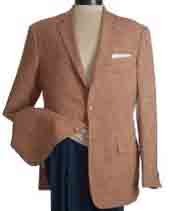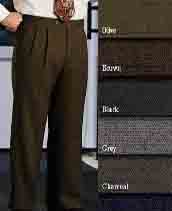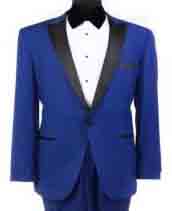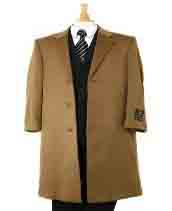Origination of Zoot Suits
The zoot suit has a vague origin and complex history. In fact, the exact origin of this suit will never come to light. It played a major role in the urban music and dance scene during 1930s. It served as a symbol of minority social resistance, urban youth and working class pride.
 It comes with high-waisted, wide-legged, tight-cuffed pegged trousers and a long coat with wide lapels and wide padded shoulders. It was always worn with a long keychain that looped almost to the ankle. It was the rebellious fashion of young men during 1930s and 1940s. The oversized attire was an extravagant personal style and a declaration of freedom and auto-determination. Many people still consider it as a "rebellious garment of the era". It is described as a "killer-diller coat with a drape shape, reet pleats and shoulders padded like a lunatic's cell."
It comes with high-waisted, wide-legged, tight-cuffed pegged trousers and a long coat with wide lapels and wide padded shoulders. It was always worn with a long keychain that looped almost to the ankle. It was the rebellious fashion of young men during 1930s and 1940s. The oversized attire was an extravagant personal style and a declaration of freedom and auto-determination. Many people still consider it as a "rebellious garment of the era". It is described as a "killer-diller coat with a drape shape, reet pleats and shoulders padded like a lunatic's cell."
Harold C. Fox, the Chicago clothier and big-band trumpeter created and named the zoot suit. It crated by Fox had reet pleat, reave sleeve, ripe stripe, stuff cuff and drape shape, and it was the stage rage during the boogie-woogie rhyme time of the early 1940's. The credit also goes to Louis Lettes who as a tailor in Beale Street and Nathan (Toddy) Elkus who was a Detroit retailer.
This style of clothing is popularized by African Americans, Mexican Americans, Filipino Americans, Italian Americans and Hispanics, during the late 1930s and 1940s. It first gained popularity in Harlem jazz culture in the late 1930s where they were initially called "drapes". It became very popular among young Mexican Americans, especially among those in Los Angeles who styled themselves as "pachucos". It was popular in the Latino community.
Everyone wants to find the meaning of the zoot suit, but no one is quite sure what it means. According to the Oxford English Dictionary, the word "zoot" comes from a reduplication of the word 'suit'. It was probably first coined by Mexican American pachucos as part of their slang, "Caló", evolving from the Mexican Spanish pronunciation of the English word "suit" with the "s" taking on the sound of a "z". But whoever coined the term created a splendidly apt name for what is surely the most bizarre raiment ever worn by the American male.
They were used for special occasions such as a dance or a birthday party. The amount of material and tailoring required made them luxury items. Many young people wore a more moderate version of the "extra-bagged" pants. Often zoot wearers put on a felt hat with a long feather and pointy, and French-style shoes.
It is the only article of clothing ever credited with causing a riot. Anti-Latino race riots in Los Angeles during World War II are known as the Zoot Suit Riots. This culture prevailed in spite of restrictions and discrimination.
Recently Stanford University, celebrated 1940's Mexican-American culture and the 50th anniversary of this attire in Los Angeles, highlighting the complex relationships between fashion and social interpretations of the this attire, with screenings of Luis Valdez's "Zoot Suit" movie.









